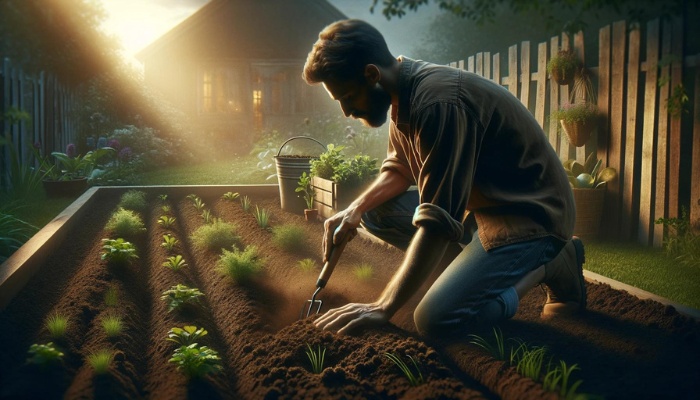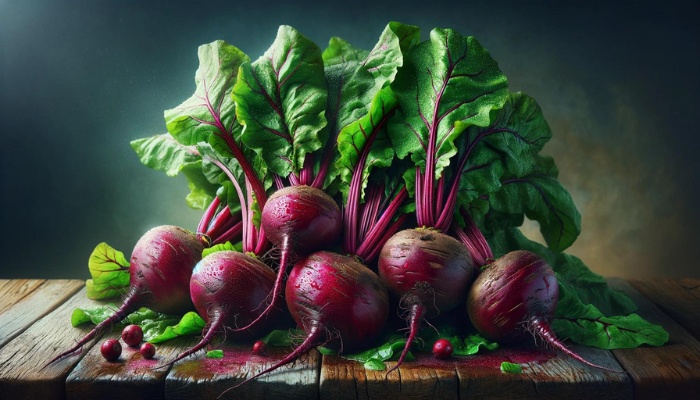Growing beets in a square foot garden is a practical and efficient way to enjoy these nutritious root vegetables in your own backyard.
This method of gardening, which organizes plants in tightly spaced, square-foot plots, is ideal for maximizing yield in small spaces. Beets, with their compact growth habit, are particularly well-suited to this approach.
Whether you’re a seasoned gardener or just starting out, you’ll find that growing beets in this manner is straightforward and rewarding, offering a fresh and flavorful addition to your meals directly from your garden.
Understanding Square Foot Gardening
At its core, square foot gardening is a highly efficient method that maximizes crop yield in minimal space by dividing a growing area into small square sections.
This approach requires careful planning in terms of garden layout to ensure each plant has enough room to grow without overcrowding its neighbors.
When you’re plotting your garden, you’ll divide your space into squares, each typically 1 foot by 1 foot. This grid pattern isn’t just about organizing your plants neatly; it’s a strategic method to boost productivity and manage resources effectively.
Tool selection becomes crucial in square foot gardening. You’ll need tools that allow for precision and ease, as working within these small, defined spaces can be more meticulous than traditional gardening.
A trowel, dibber, and pruning shears are essentials, enabling you to plant, maintain, and harvest your crops without disturbing the surrounding squares.
These tools help you work efficiently, ensuring your beets and other vegetables receive the care they need without wasting space or resources.
Selecting the Right Beet Varieties
With the vast array of options available, focusing on beet colors and harvest time can significantly enhance your gardening experience.
Beet varieties span a spectrum of colors, from the traditional deep red to golden yellow and even candy-striped. Each color not only adds a visual appeal to your garden and plate but also brings a unique flavor profile.
When selecting beet varieties, consider the harvest time to ensure a steady supply. Early-season beets, such as ‘Detroit Dark Red’, mature quickly, allowing you to enjoy your first harvest within 50 to 60 days.
For a mid-season option, ‘Golden’ beets offer a slightly sweeter taste and take about 55 to 65 days to mature. If you’re looking for a late-season harvest, the ‘Chioggia’ beet, with its distinctive red and white rings, matures in about 60 to 75 days.
Soil Preparation and Nutrients

After selecting the right beet varieties for your square foot garden, you need to prepare the soil and understand the specific nutrient requirements to ensure a bountiful harvest.
Beets thrive in well-drained, fertile soil. The first step is to test the soil’s pH levels. Beets prefer a pH range of 6.0 to 7.5. If your soil is too acidic or alkaline, you’ll need to adjust it accordingly with the appropriate amendments.
Next, focus on compost integration. Incorporating plenty of organic compost into the soil won’t only improve its structure and drainage but also provide the essential nutrients beets need to grow robustly.
Beets are particularly hungry for phosphorus and potassium, which aid in root development and overall plant health, respectively. Ensure your compost is rich in these nutrients.
Additionally, keep an eye on nitrogen levels. While nitrogen is necessary for leafy growth, too much can lead to lush foliage at the expense of root development.
Strike a balance in your soil’s nutrient composition to promote healthy, evenly developed beet plants.
Planting and Spacing Techniques
To ensure optimal growth and a successful harvest, understanding the intricacies of beet planting is essential.
Beet seeds should be sown directly into the soil because they don’t transplant well. The ideal germination temperature for beet seeds ranges between 50°F and 85°F.
Plant the seeds about 1/2 inch deep, spacing them approximately 2 to 3 inches apart in each direction. This spacing allows for adequate airflow and growth room, reducing the risk of disease and competition for nutrients.
Once the seedlings emerge and grow to about 2 inches tall, thin them to one plant every 3 to 4 inches.
This may seem counterintuitive, but thinning is critical for preventing overcrowding and ensuring each beet has enough space to develop properly.
Keep an eye on the germination temperature and adhere to the recommended spacing guidelines to guarantee your beets have the best possible start.
With careful attention to these planting and spacing techniques, you’re setting the stage for a bountiful harvest come harvest time.
Watering and Pest Management
Watering your beets correctly is vital for their growth. They require consistent moisture, especially during the early stages of development.
A lack of water can lead to tough, woody beets, but too much water can cause them to crack or become too leafy.
Using mulch around your beet plants can help retain soil moisture, reduce weed competition, and maintain an even soil temperature, enhancing the overall health of your beets.
Pest management is equally important. Companion planting is a natural way to deter pests. Certain plants, when grown next to beets, can help repel harmful insects or attract beneficial ones.
Here’s a quick guide on companion planting for your beet garden:
| Companion Plants | Benefits | Pests Repelled |
|---|---|---|
| Onions | Improves flavor, deters pests | Aphids, mites |
| Marigolds | Attracts beneficial insects | Nematodes |
| Nasturtiums | Lures aphids away from beets | Aphids |
| Bush beans | Fixes nitrogen in the soil | – |
| Garlic | Repels pests | Root maggots |

